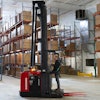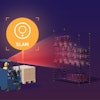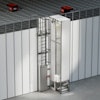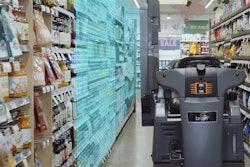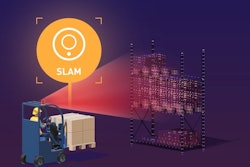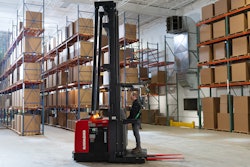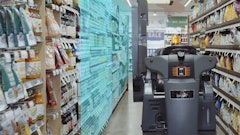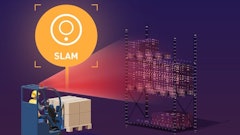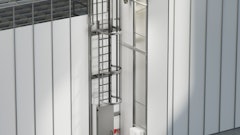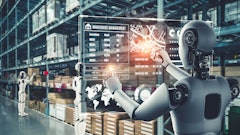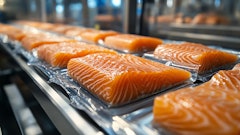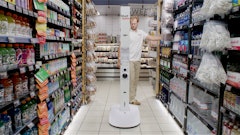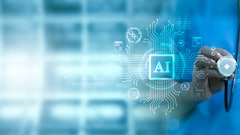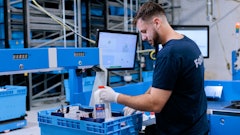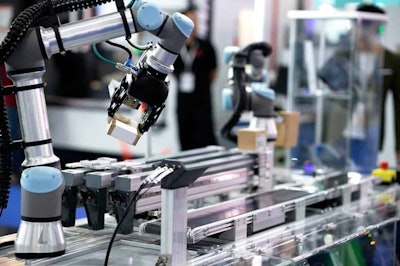
Labor remains the most persistent global supply chain threat as dull, dirty and dangerous jobs become harder to staff; views on immigration shift; and an expanding gig economy offers alternative employment options. Today’s most advanced automation answers the call, filling labor gaps thanks to advanced vision AI unlocking robotic capabilities. These automated solutions are gaining global steam, clearing bottlenecks around the world, and recent hardware advances make it all possible.
The arrival of AI processors and graphic processing units (GPUs) originally designed for gaming are driving down costs and moving incredible computing power directly to a robot by deploying these technologies with edge computing. Connecting occasionally for training and updates, robots have more than enough local computing power to think and act in milliseconds thanks to these processing powerhouses.
These processors enable localized deployment of advanced vision AI for automated systems, and are opening up a new world of automation possibilities in foodservices, including two recent examples:
A new salad kitting solution that utilizes new HD robots to place pieces of raw peppers and bags of salad dressing in bowls of lettuce. Designed for mobility, the machine can be wheeled to the correct place on the production line. With all necessary components included, operation is as simple as connecting it to the power supply and compressed air and choosing the program. The machine is equipped with a turntable and accommodates four crates of ingredients for the salads to keep the line running during a crate change.
An automated dish sorting and washing solution for commercial kitchens accurately detects, picks and places dishes into a dishwasher for cleaning and sanitation to ease one of the industry’s most common labor shortfalls. Advanced vision AI identifies the objects and tells the robotic arms what to pick, how to pick it and where to place it. A suction module removes food residues for a cleaner and more efficient wash cycle.
To build these and other advanced automated solutions for the food industry, systems and robotics integrators bring together best-fit technologies for each task required for the job, including robots or other physical systems, control systems, end effectors/grippers, both 2D and 3D cameras, and advanced vision AI. Each adds a critical element to the equation; robots handle the physical lifting, control systems provide instructions, grippers grasp and hold items with precision, cameras offer a clear picture of the entire puzzle, and vision AI processes the information and recommends the best approach for prioritizing actions.
Previously, automated solutions fell short without the AI processing capabilities now available. Smart cameras, for example, offer excellent capabilities to automate routine tasks such as pattern picking for depalletization where objects are always stacked in the same order. However, for highly dynamic automation, smart cameras require a heightened level of vision AI processing to quickly and accurately analyze data and provide instructions for more chaotic scenarios, such as trailer unloading where objects were loaded haphazardly or shifted in transit.
How new AI hardware unlocks capabilities
AI capabilities, including generative physical AI (generates insights and actions), have the potential to move vision AI beyond operational integration and automation to system design and creation. Physical AI extends generative AI into the 3D world with a digital twin approach that creates virtual representations of processes and environments for testing scenarios by incorporating information about spatial relationships and real-world physical rules. For automation purposes, physical AI starts with a digital twin of a space, such as a factory, adds sensors and autonomous machines, and runs simulations that mimic real-world scenarios. Sensors capture interactions, such as movements and collisions, to understand how they occur and how they can be avoided.
Other tools greatly enhance the efficiency and accuracy of robots performing complex tasks, facilitating more natural and safer interactions between humans and machines, and improving accessibility and performance in real-world applications, adding extraordinary capabilities to the automation value chain.
These processors and tools help companies overcome the most complex automation challenges. While AI data centers have garnered most of the headlines recently, it’s actually the ultra-powerful, hand-sized graphics cards unlocking robotic automation’s true potential. Capable of localized installation (right in the robotic cell), AI processing capabilities are available on demand without the need to access the cloud for rapid data analysis and decision making with no latency. In high-volume and high-variable scenarios such as dish sorting and washing, salad kitting, quality assurance, and other food industry applications, split-second processing and decision making is paramount for success.
The tip of the automation iceberg
The latest innovations in automating food industry tasks are just the tip of the automation iceberg. AI and the hardware that makes it possible are both evolving at an incredible pace; as capabilities keep advancing, new automated solutions will continue to emerge. Tasks that were once thought impossible to automate due to their complexity are already being solved by robotics integrators, hardware manufacturers and software providers. With each AI advancement, automation continues to reach new heights.

